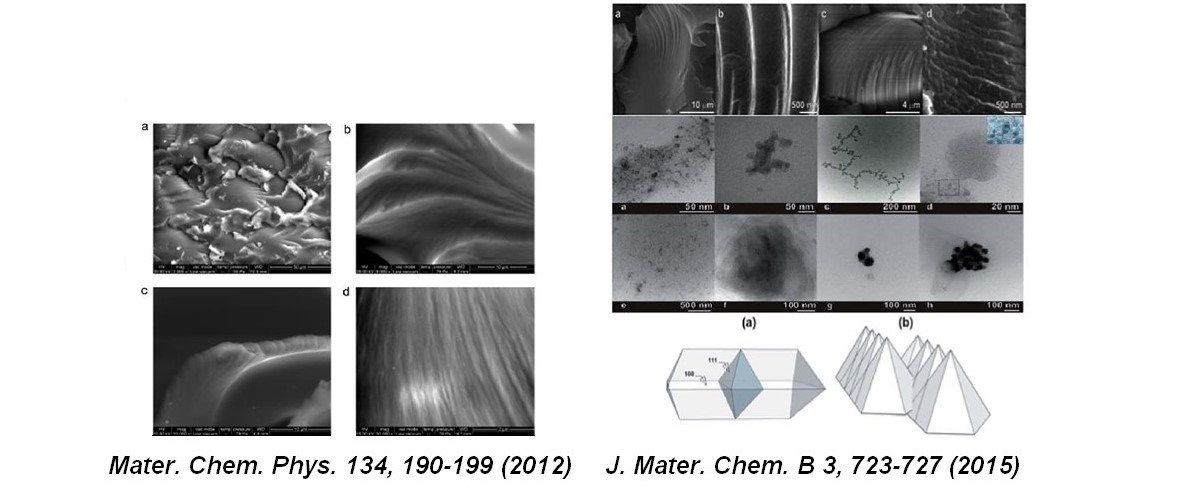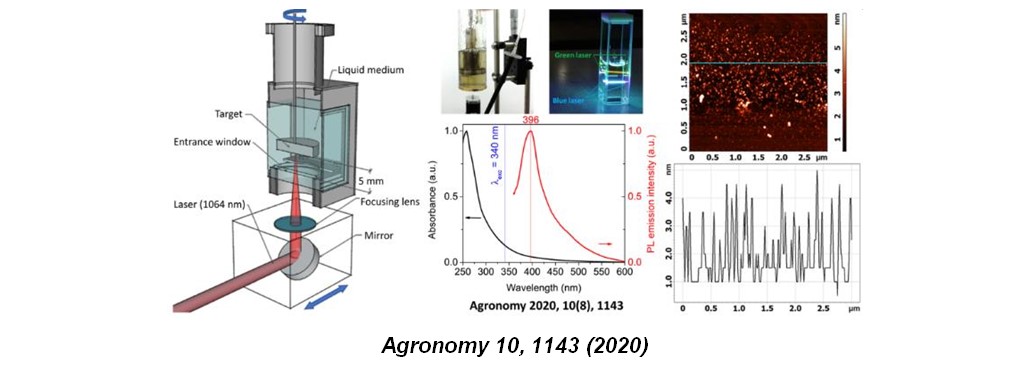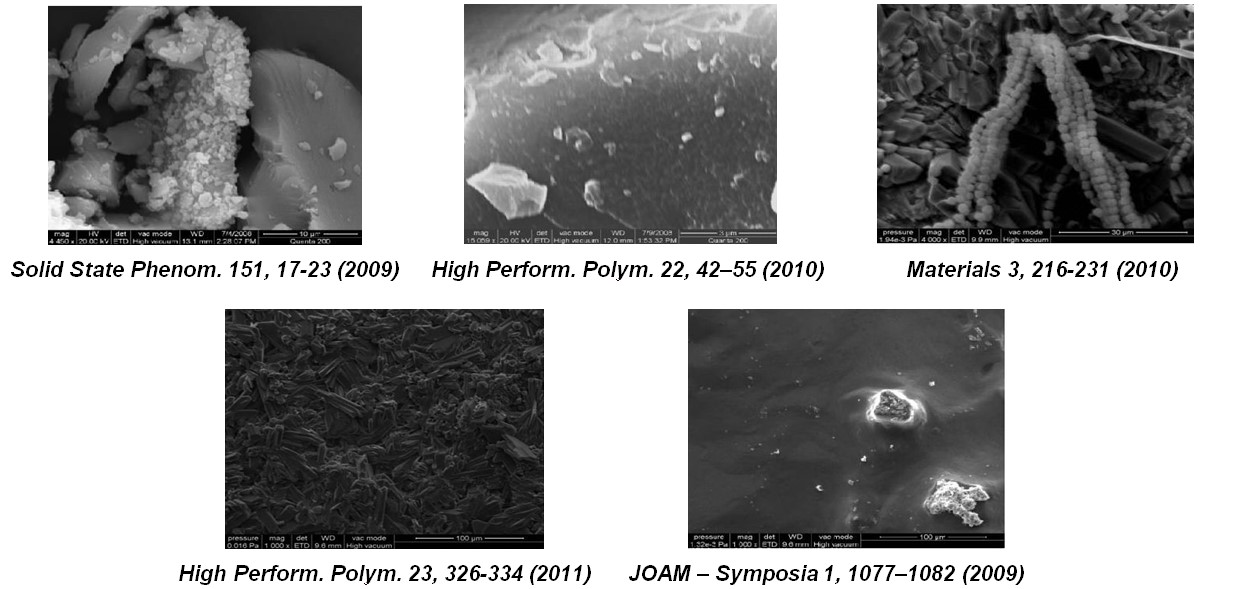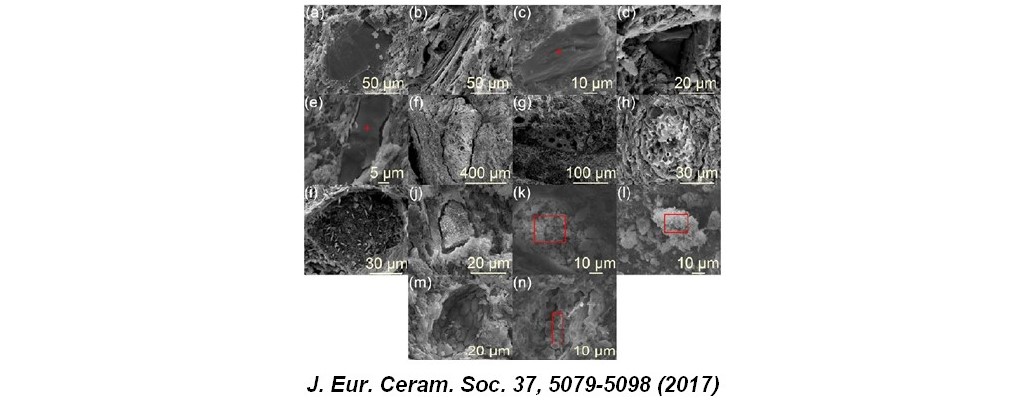1) Improvement of polymeric surface proprieties by a method in two steps plasma and wet chemical treatments for target-applications
a. Obtaining biocompatible surfaces for polyethylene terephthalate films: plasma treatment followed by wet chemical treatment of polyethylene terephthalate films in a collagen solution, characterized by SEM pictures

b. A facile, eco-friendly route, in two steps, for obtaining of poly-L-lactic acid/chitosan-silver nanoparticles scaffolds under quiescent conditions: plasma treatment followed by wet chemical treatment of poly-L-lactic acid films in a chitosan based-silver nanoparticles solution, characterized by SEM pictures and EDAX measurements

2) Methods for structural and morphological characterization of nanostructured polymers
a. Obtaining biocompatible antimicrobial surfaces for polyethylene terephthalate films: plasma treatment followed by wet chemical treatment of polyethylene terephthalate films in a solution containing gold nanoparticles, characterized by microscope FTIR and Confocal Raman microscope

b. Obtaining chitosan-hydroxyapatite composite films containing silver nanoparticles, characterized by SEM-EDAX, Raman confocal microscope and profilometry methods

3) Preparation and Characterization of Electrospun Collagen Based Composites

Scheme of preparation and SEM image of the diameter distribution and morphologies of the nanofibrous mats: (a) Collagen, (b) Collagen-PET, (c) PET
4) Functional hierarchical nanostructured materials with controlled design
One of the research directions that our group is focused on is the development of self-assembled hierarchical nanostructured materials. Due to the controlled design of hierarchical assemblies, materials with special properties for applications in the field of antibacterial/antimicrobial/protective coatings or electroluminescent components can be obtained. Materials with both micro- and nano- features have increased structural functionality, as well as improved properties as opposed to individual structures of different sizes. Additionally, these hierarchical materials can be regarded as tools that can be employed in the understanding of phenomena associated with the dimensions of the structural components.

5) Pulsed Laser Deposition and UV laser annealing of metal oxides thin films
Highly conductive and transparent Al-doped ZnO (AZO) thin films were obtained on amorphous substrate at room temperature through Pulsed Laser Deposition (PLD). The oxygen/argon gas mixture was found to enhance the electrical properties of the obtained AZO thin films in comparison with the samples deposited only in an oxygen environment (the best electrical resistivity was 5.1 × 10−4 Ω cm), while preserving a high visible optical transmittance (about 90%).
High quality Al-doped ZnO (AZO) films with uncommon (110) growing orientation were obtained through Sequential Pulsed Laser Deposition (SPLD) on amorphous substrate at room temperature. Zn and Al metallic targets were used as ablation sources in oxygen environment for ZnO host lattice growth and doping, respectively. Fine-tuning of doping concentration was demonstrated by changing the ratio between the number of laser shots used in the sequential laser ablation of each targets. The uncommon growing (110) mode of AZO thin films was assigned to a combined effect of doping concentration and oxygen deposition pressure decreasing.

6) Carbon laser produced plasma chemistry
Carbon laser produced plasmas are currently of high interest in the synthesis of some nanostructured materials with an important applications potential such as, nanotubes, nanowires, graphene, etc. Therefore, the study of the fundamental processes related to such transient plasmas can contribute to the achievement of important progress in understanding and optimizing the deposition process of high-quality carbon-based nanomaterials.

7) Green synthesis of metal and semiconductor nanoparticles: Pulsed Laser Ablation in Liquid
A green method for the synthesis of metal and semiconductor nanoparticles was developed. Stable carbon nanoparticles (CNPs) suspensions in ethanol and water were obtained through Pulsed Laser Ablation in liquid (PLAL) of pyrolytic graphite, without the use of surfactants. The reproducibility of the fabrication process and, at the same time, the high productivity rate were assured by scanning the laser spot along a helical trajectory, so that a fresh focalization spot is provided each time when the laser pulse reaches the target surface.

8) Application of materials science to archaeometry and conservation science
Another research direction is focused on the development of nanomaterials for the conservation/restoration of cultural heritage, one of the few areas considered by the National Strategy as having the greatest potential to support Romania in becoming competitive at European level. In this regard, a series of nanostructured materials were synthesized for the protection of cultural heritage items (monumental stone, ceramics and prehistoric bones) and their durability was tested in conditions of accelerated artificial aging. The subject is of real interest, taking into account the fact that part of the cultural heritage built of stone, ceramics and bone, transmitted to future generations and representing different cultures, is exposed to the environment and this favors disintegration phenomena.

Patent no. 129364, State Office for Inventions and Trademarks, 30.03.2017

Old ceramic artifacts that have survived for thousands of years are of great importance because they provide valuable information about the culture and technological innovations of the civilizations and societies that made them. Before being exposed to accelerated artificial aging tests, a series of pottery fragments from the Cucuteni period were structurally analyzed. The multi-analytical characterization of these ceramic fragments highlighted the advanced technological knowledge of prehistoric potters (judicious choice of raw material with a suitable composition, which prevented the initiation of fractures, advanced skills in the construction of specialized furnaces that allowed the good control of temperature, in-depth technical knowledge about the temperature and atmosphere required during the firing in order to obtain high quality ceramics).

The identification of pigments and other painting materials used in the creation of paintings is necessary in order to obtain information about the origin, style and painting methods employed by the author or the date of production of the masterpieces. All this information has a major importance in choosing the most suitable materials and methods for the subsequent restoration of the analyzed works of art. The investigations aimed to identify the molecular structure of pigments and painting components used by some of the most famous Romanian painters, i.e., Nicolae Grigorescu, Stefan Luchian, Teodor Aman. Among the important discoveries in this field one can mention (i) the first use, by a painter belonging to the Impressionist school (Nicolae Grigorescu), of the natural ultramarine pigment and (ii) the first mention of the use of indium oxide as a yellow pigment in a work of art (Stefan Luchian).

|








